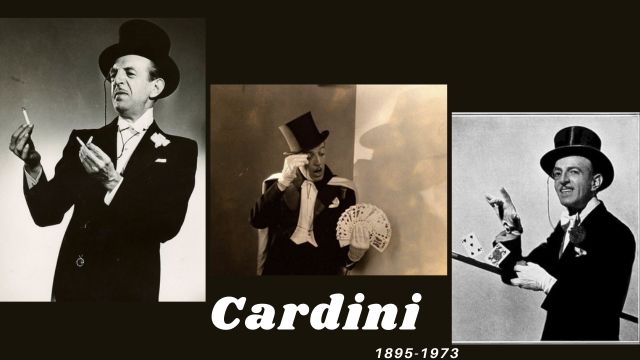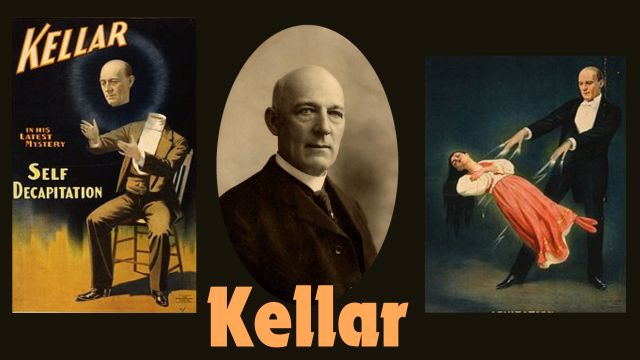Since the dawn of civilization, humans have been spellbound by the art of magic and illusion. The inexplicable feats, the breaths of disbelief, the awestruck wonder – magic has a singular power to transport us into realms of pure amazement. While many have attempted to master this craft, only a select few have ascended to legendary status through their unparalleled skills and otherworldly showmanship.

These legendary magicians are more than mere tricksters – they are leading lights into a world where the impossible reigns supreme. With deft movements and miraculously subtle misdirections, they shatter the boundaries of reality, leaving even the most skeptical minds questioning the very nature of what they’ve witnessed. Their secrets are fiercely guarded from curious eyes that wish to reveal the methods behind the madness, and are as coveted as the crown jewels.
Here is a list of 10 of the most Legendary magicians in history:
Harry Houdini (1874 – 1926)
You can’t talk about legendary magicians without bringing up the one and only Harry Houdini. Born in Budapest as Erik Weisz, Houdini became famous for his crazy escape acts. He could break free from strait jackets, locked boxes, and even water tanks after being tied up and trapped. Houdini’s showmanship skills were off the charts, and he had incredible strength and stamina. That’s what made him the greatest escape artist ever.

Jean Eugène Robert-Houdin (1805 – 1871)
Jean-Eugène Robert-Houdin was the founding father of modern magic as we know it today. This pioneering French illusionist’s innovations and enduring influence are so profound, he has been rightfully crowned the “Father of Modern Magic.”
Born in 1805, Robert-Houdin’s curious mind and keen eye for showmanship quickly set him apart from the typical street magicians of his era. He recognized the power of illusion not just to entertain, but to utterly dumbfound audiences by creating effects that appeared completely inexplicable.
His legendary orange trick, which appeared to pass a whole fruit from one hand through a tabletop into the other, defined his unparalleled dexterity.One of Robert-Houdin’s most celebrated and mysterious illusions was his incredible “Mystery Clock.” This intricate clockwork automaton appeared to operate through some invisible, magical force.
The Mystery Clock
The Mystery Clock was a large timepiece housed in a glass case. At the top sat a mysterious-looking figure with a pencil in its hand. On the hour, the figure would mysteriously animate, write the correct time on a small chalkboard, and then freeze back into stillness.
No matter how closely spectators studied the clockwork mechanics, they could find no gears, pulleys or strings that could explain how the figure moved and transcribed the accurate time hour after hour. It seemed to defy all known principles of physics and engineering.
The Mystery Clock became one of Robert-Houdin’s most coveted and talked about illusion pieces. Its ingenious inner workings remained a closely guarded secret for decades after his death. Even other master magicians and clockmakers of the era couldn’t replicate or explain its magical operation.
Besides creating new and amazing illusions, Robert-Houdin wrote a ton of books explaining exactly how he did his magic tricks. These books became extremely important for magicians who came after him. In the books, he pulled back the curtain and revealed his secrets for misdirecting the audience’s attention, understanding how crowds react, and putting on a great theatrical performance full of drama. Even today’s magicians study and greatly respect the teachings and tricks that Robert-Houdin shared in those groundbreaking books. His writings made sure his magic knowledge would be passed down for generations of illusionists to learn from.
Cardini (1895-1973)
Born Richard Valentine Pitchford, Cardini was a true master of up-close magic tricks using small objects like cards and coins. His sleight-of-hand skills were out of this world – he could make things seem to appear, disappear, and change right before your eyes with lightning fast hand movements. Cardini was known for his amazing card tricks where cards would vanish into thin air or transform into different cards.

One of his signature illusions was making a whole deck of cards seem to appear from nowhere in his hands. He also did crazy tricks like pulling coins from people’s ears and hair, or making coins multiply in his hands. Cardini’s magic was made even more incredible by his dramatic gestures and acting that perfectly misdirected the audience so they’d never catch how the tricks were really done. Not only was he an incredible performer, but Cardini also wrote down and taught many of his secret techniques, ensuring future magicians could learn from one of the greatest sleight-of-hand artists ever.
P.C. Sorcar (1913-1971)
P.C. Sorcar was a groundbreaking magician from India who created a totally unique style by blending classic illusions with ancient Indian spirituality and yoga. His most celebrated tricks had a real mystical feel, like the
“X-Ray Eye” where he seemed to look inside people’s bodies
“Sorcar Raj Jadu” where he apparently conjured flames just by meditating.
“X-Rated” trick where Sorcar cut a person into three pieces and resurrection on stage.


Audiences around the world were amazed by his exotic performances that married the magic traditions of East and West so seamlessly. Sorcar helped introduce yogic philosophy and practices into the art of illusion through creative tricks that tapped into chakras and mantras in incredibly visual ways. His breakthrough blend of ancient and modern magic left a lasting impact on the profession.
Alexander Herrmann (1844-1896)
Alexander Herrmann, known as “Herrmann the Great,” was one of the 19th century’s premier illusionists. He came from a respected family of magicians and took grand illusion acts to new heights. Herrmann dazzled audiences worldwide with his incredible large-scale tricks like making a massive elephant disappear from the stage in a puff of smoke. His lavish magic performances featured amazing effects with rabbits, birds, and even spirits seeming to materialize out of thin air.
One of Herrmann’s most astonishing illusions involved a ghostly apparition named “Aztar” that would float across the stage to the shock of spectators. With a flair for showmanship and wildly visual spectacles, he helped define the golden age of stage magic and set the standard for big theatrical illusion shows that continue to enthrall modern audiences. Herrmann’s legacy as a master showman lives on.
Harry Kellar (1849-1922)
Harry Kellar was a true superstar illusionist in the late 1800s and early 1900s, earning him the nickname “The Dean of American Magicians.” He was renowned for his incredible large-scale illusion acts and showmanship. One of Kellar’s most famous and shocking tricks was:
The “Self-Decapitation” illusion where he appeared to completely remove his own head. Another signature illusion involved making a monstrous 10-foot devil monster seem to appear out of thin air on stage.

Kellar also amazed audiences by making his assistant float and levitate with no visible wires or supports. In addition to his legendary performances, he helped expose fraudulent spiritualist acts of his era, reinforcing his reputation as a world-class illusionist who could reveal the tricks behind fake paranormal claims. Kellar set a new standard for spectacular magic shows that continue to inspire grand illusion acts today.
Dai Vernon (1894 – 1992)
Known as “The Professor,” Dai Vernon was the ultimate master of close-up sleight-of-hand magic with cards and small objects. He pioneered countless ingenious card tricks and techniques that are still studied religiously by magicians today. From making cards visibly change values to making them seem to defy gravity, Vernon’s dexterity was unparalleled. Beyond just performing, he also wrote extensively and taught many of the world’s finest close-up artists, sharing his coveted secrets and solidifying his legacy as one of the most influential figures in magic.
Penn & Teller (1975 – Present)
As a comedy magic duo, Penn Jillette and Teller bring a totally unique act by blending mind-boggling illusions with outrageous humor. Penn is the big, boisterous comedic half while Teller silently works intricate tricks in clever tandem.

Their trademark is taking the unusual approach of actually explaining some tricks after performing them – something most magicians would never do. Hit illusions include making objects appear to defy physics and making outrageous surprises materialize onstage, all while delivering laughs.
Apollo Robbins (1974 – Present)
While not a household name, Apollo Robbins is revered as a true master of sleight-of-hand magic and misdirection. His unbelievable skills involve seamlessly stealing people’s personal items like watches, wallets and jewelry right off their bodies without them ever noticing. This has earned him the moniker “The Gentleman Thief.” Robbins’ ability to manipulate perceptions and attention borders on superhuman, routinely fooling even trained security experts with his deft handwork.
David Copperfield (1956 – Present)
No modern illusionist has achieved more worldwide fame and success than David Copperfield. His immense drive for groundbreaking illusions led to iconic large-scale feats like making the Statue of Liberty appear to disappear or walking through the Great Wall of China. Copperfield’s productions masterfully blend classic magic artistry with cutting-edge technology and logistics to create spellbinding spectacles. His legendary performances and TV specials have introduced millions to the endless possibilities of grand illusion.
Wrapping Up
These legendary magicians left a huge mark on the world of magic through their talent, creativity and showmanship. Audiences were always left stunned, wondering just how the tricks were pulled off so perfectly. While the real secrets may never be revealed, the legacies of these magical greats will continue to inspire illusionists for generations to come.
From daring escape artists like Houdini to larger-than-life stage illusionists like Kellar and Herrmann, from skillful sleight-of-hand masters like Cardini and Robbins to creative innovators like Robert-Houdin and Sorcar, these legendary performers transcended mere tricks. They elevated magic to an art form through their showmanship, skill, and relentless pursuit of the impossible.
Their influence extended far beyond the stage, capturing the public’s imagination and inspiring future generations to take up the mantle of magic and illusion. Though their methods may remain closely guarded secrets, the enduring legacies of these greats will continue to bewitch and delight audiences forevermore.